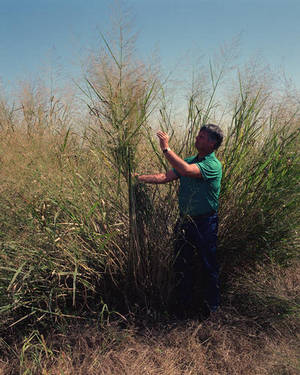Transport systems have been powered by grass for hundreds of years in the form of horses, but it looks like it will be a fuel of the future as well. Farmers in Nebraska and the Dakotas have been taking part in a study on Switchgrass a perennial native American plant, that often grows as a weed.
They have been studying how much energy it takes to grow the grass, including fuel to power the tractors, and the energy required to make the fertilizer used to speed its growth and to produce the seeds.
 Once the grass is established they have found that it produces 5-11 tonnes of grass per hectare depending on the weather which translates into ethanol with at least 5 ½ times the energy that was put in, which compares very favourably to other methods of making biofuels based on fermenting foodstuffs such as maize which only produce 1 ¼ times the energy that is put in.
Once the grass is established they have found that it produces 5-11 tonnes of grass per hectare depending on the weather which translates into ethanol with at least 5 ½ times the energy that was put in, which compares very favourably to other methods of making biofuels based on fermenting foodstuffs such as maize which only produce 1 ¼ times the energy that is put in.
The major unknown in this calculation is the large scale conversion of cellulose, which makes up most of the energy in grass, into ethanol which conventional yeast fermentation can't do. Conventional methods of doing this involve using large amounts of enzymes to break down the cellulose into sugars which yeasts can then break down.
And in another related story this week a company called Coskata in America has developed a new strategy and they claim to be able to produce ethanol at about $1 a gallon or about 12p a litre. This relies of heating up the vegetable material without oxygen to form a mixture of carbon monoxide and and hydrogen known as syngas. This gas is then fed through a tank full of bacteria which convert the syngas into ethanol.
So with any luck a form of biofuel which is actually useful at combatting global warming may be around the corner.










Comments
Add a comment